Jonathan Gold’s 101 Best Restaurants: 101-75
More: 1-25 | 26-50 | 51-75

101 Starry Kitchen
The restaurant has grown up, proprietor Nguyen Tran assures you. He almost never wears his banana suit anymore. His kitchen crew doesn't necessarily show up to events dressed as wookiees. And Thi Tran's spicy-sweet Singapore chili crab, probably the only palatable version in Southern California, still needs to be reserved a couple of days in advance, because he has to order the plump creatures from a guy he knows up north. In the last year, Starry Kitchen has transformed — but it has transformed from a semi-permanent pan-Asian pop-up in a sleek fashion district lunchroom into a semi-permanent pan-Asian pop-up in an old-Chinatown dive, which means that the fried rice with pork belly and dried seafood, the crunchy sea bass tails and the fried tofu balls feel oddly consonant with the plastic chopsticks and the bartenders whose idea of an old-fashioned includes half a dozen maraschino cherries mashed into a crimson slurry. Do try the clay pot sea bass cooked in a complex Vietnamese caramel sauce. And stick around for the disco, if that's your thing.

100 Rocio's Mole de los Dioses
When the subject of mole comes up in Los Angeles, and it comes up more often than you might think, Rocio Camacho is always part of the discussion. She has expanded beyond the traditional black mole and even past Oaxaca's famous seven, to an almost infinite repertoire of the complex, spicy sauce, including moles made with pistachios, with toasted coffee beans and with cactus and mezcal. Is the mole made with the mushroomy corn fungus huitlacoche really the Mole of the Goddesses? That's up to you. But you can also get an oddly satisfying bowl of cream of grasshopper soup.
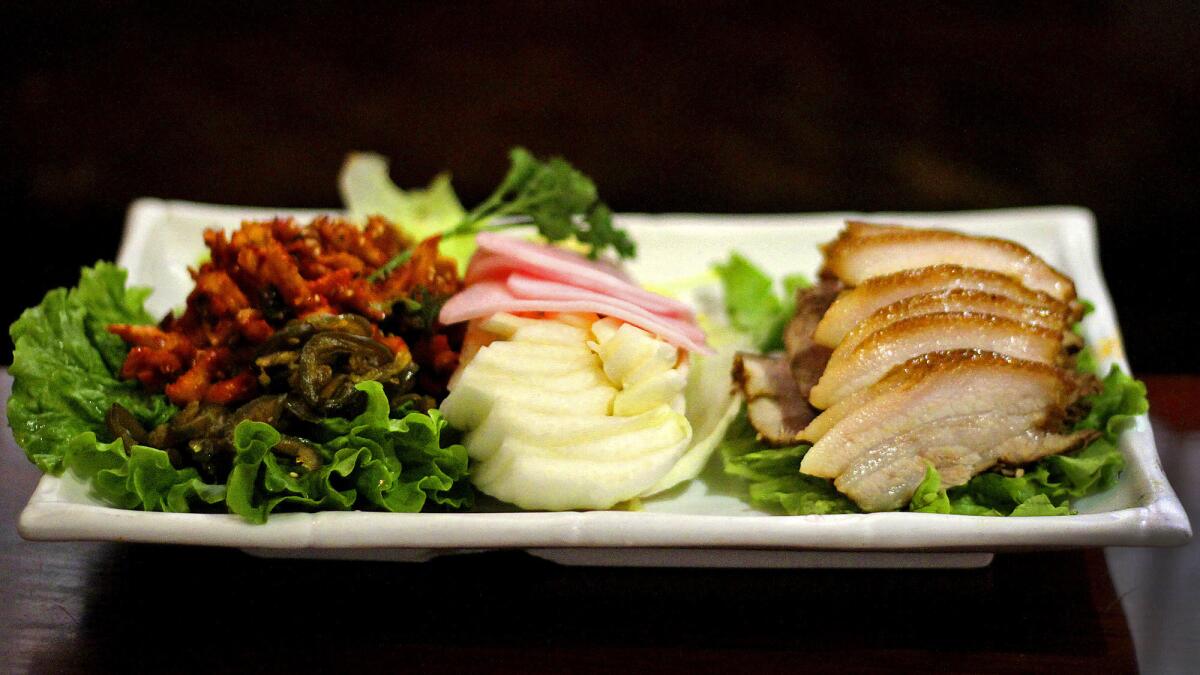
99 Kobawoo House
In Koreatown, the question is not what the best restaurant might be, but what the best restaurant might be for the particular food you might be craving at the moment: Jeon Ju for bibimbap, Soban for marinated crab, Dae Bok for spicy blowfish soup, Bon Juk for abalone porridge. In Koreatown, and in Korea, restaurants specialize. Which is why, when you walk into Kobawoo, every table will be sporting an order of bossam: a combination plate of boiled pork belly, turnip kimchi, sliced chiles and fermented tiny fish, which you wrap into spicy cabbage-leaf bundles. Kobawoo may be a great place to go for crisp seafood pancakes, game hen stuffed with ginseng and sticky rice, and pig's feet pressed into a cool, gelatinous terrine, but its bossam is unsurpassed.
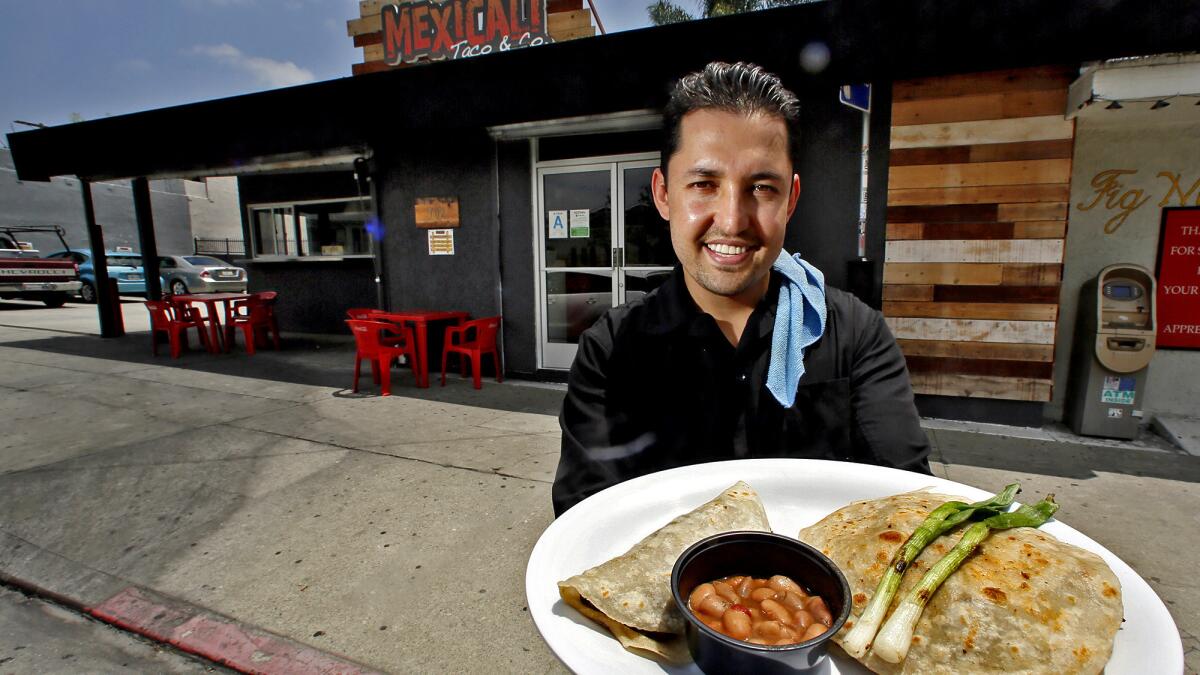
98 Mexicali Taco & Co.
The Mexicali-style tacos are pretty spectacular at this tidy storefront near Dodger Stadium, packed into the small, plump flour tortillas the owners bring up from Baja a couple of times a week. You can even get a vegan taco if that's your thing. You sprinkle them with pickled onions, moisten them with fluid taquería guacamole and a spoonful of habanero salsa, and you're good to go. But like everybody else, you will probably end up with at least one vampiro, a large flour tortilla folded over chorizo, chicken or charbroiled carne asada, maybe all three, as well as a squirt or two of garlic sauce and what can technically be described as a boatload of gooey, stretchy melted Mexican cheese.
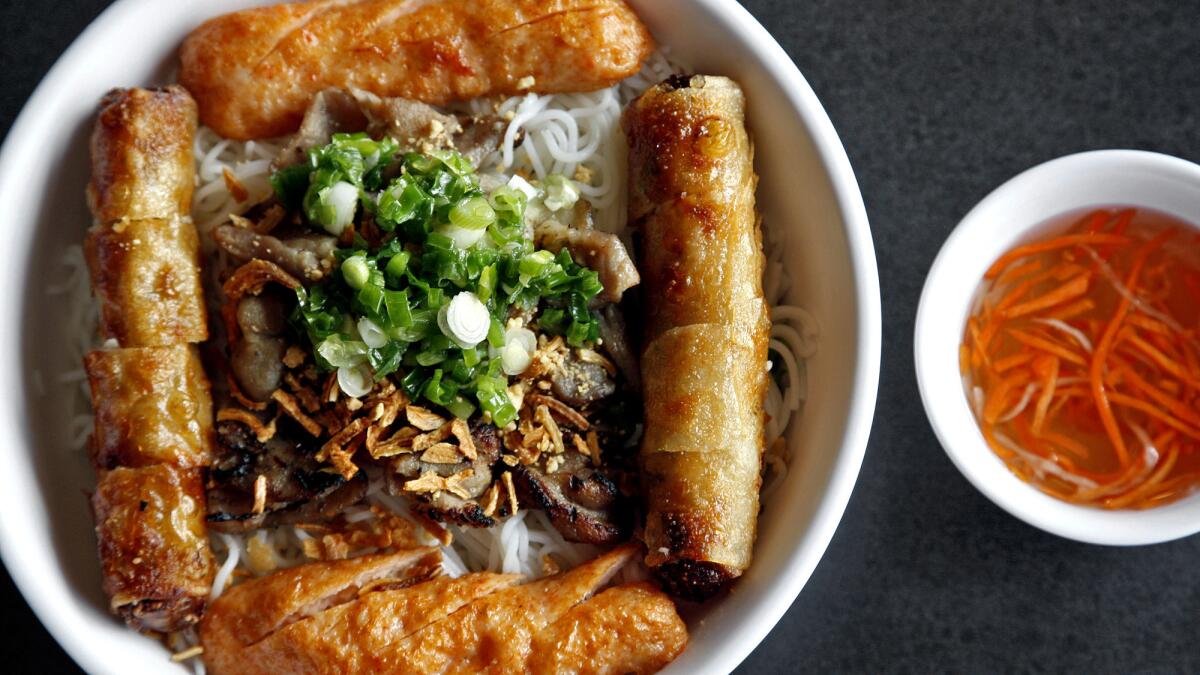
97 Golden Deli
A lot of the people I know have defected to the new Pho Filet in Rosemead for its northern-style pho with filet mignon, and Pho Thanh Lich in Little Saigon is probably worth an hour's drive from anywhere. Why then does the line outside Golden Deli stretch halfway to infinity on weekends? Because it always has; because the restaurant has set the pho standard in the San Gabriel Valley since Duran Duran was at the top of the charts; and because the cha gio, crackly skinned imperial rolls stuffed with pork and crab among other things, are good on an almost intergalactic level, even if the purists claim that they're a little too big.
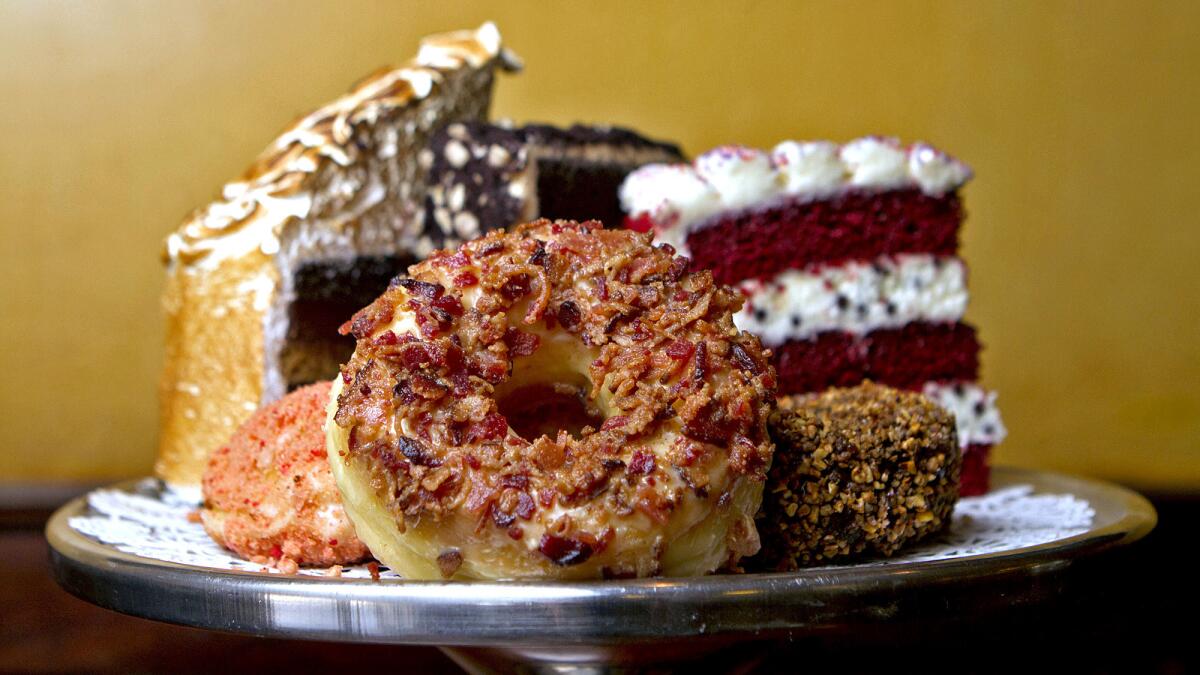
96 Nickel Diner
"Polenta?" asked co-owner Kristen Trattner. "You're coming here and you're ordering polenta?" Nickel Diner may attract more loft-dwellers than artists these days, there are leeks and fontina in Monica May's scrambled eggs, and pastry chef Emily Acevedo has been exploring the universe beyond bacon-maple doughnuts, but this is still deep downtown, a half block from the infamous stretch of 5th Street that troubadours like Tom Waits used to sing about. Pancakes and thick-cut bacon, fried catfish and corn cakes, Lowrider burgers and onion rings — that's why you go to the Nickel, which caters as much to the local street people as it does to the tax attorneys who roll in on skateboards. I relent and get an order of biscuits and gravy, with a chicken-apple sausage on the side. The polenta, by the way, is excellent.

95 Hunan Mao
Hunan cooking, which tends toward simmered organs, fermented vegetables and oiliness, is not, at first encounter, the friendliest of China's cuisines. At Hunan Mao, house-cured ham is forest-fire smoky, like Memphis barbecue times 10, even when chopped and fried with handfuls of dried long beans, a handful of garlic cloves, and the vivid red and green chopped chiles that dominate almost everything here. The giant steamed fish heads are comically large, frosted with the chopped blend of dried, fresh and fermented chiles that give Hunanese cooking its reputation for head-snapping heat. Mao's braised pork, a sweet, slightly spicy clay-potful of thick-cut braised pork belly and garlic named for Hunan's favorite son, is almost unbearably rich. And the wall TV is occasionally tuned to things like a broadcast plenary of the National People's Congress, which is distinctly not the Dodgers game. Should you go anyway? You don't want to miss the cucumber toss-fried with shiso.

94 Border Grill
Mexican cooking in Los Angeles has changed a lot since Susan Feniger and Mary Sue Milliken opened their first Border Grill in the 1980s, and it is no longer unusual to find ingredients sourced from the Yucatan, margaritas made with top-shelf tequila or standard dishes transformed with expensive, organic ingredients. The restaurant, its chefs and its cookbooks have been around so long that it is easy to take them for granted, as breathtaking as its stuffed steak and pescado Veracruzano were when we all first tasted them. But still, nobody has managed to marry the freshness of the California kitchen with the deep, complex flavors of Mexican cooking in quite the way that Feniger and Milliken do, and if you ran across their ceviche, pork-steak carnitas or squash tacos in an Eastside dive, you would be as happy as a lime-marinated clam.

93 Bulgarini Gelato
The foothills of the San Gabriel Mountains are home to some of the best ice cream in California, including the all-American Main Street creaminess of Mother Moo in Sierra Madre and the farmers market freshness of the original Carmela. But even the glories of Mother Moo's three-milk ice cream fade in comparison with the gelati of Leo Bulgarini, who is nearly as fanatical about his gelato as he is about his hometown AS Roma soccer team; he is especially adept at capturing the flavors of ripe, local fruit. It is hard to say what is better: his goat's milk gelato with toasted cocoa nibs, the yogurt gelato with sea salt and olive oil, the blood orange sorbetto or the gelato he makes with the ultra-pricey Bronte pistachios he hand-carries from Sicily. House policy at Bulgarini mandates a three-scoop minimum, at $2.50 per.
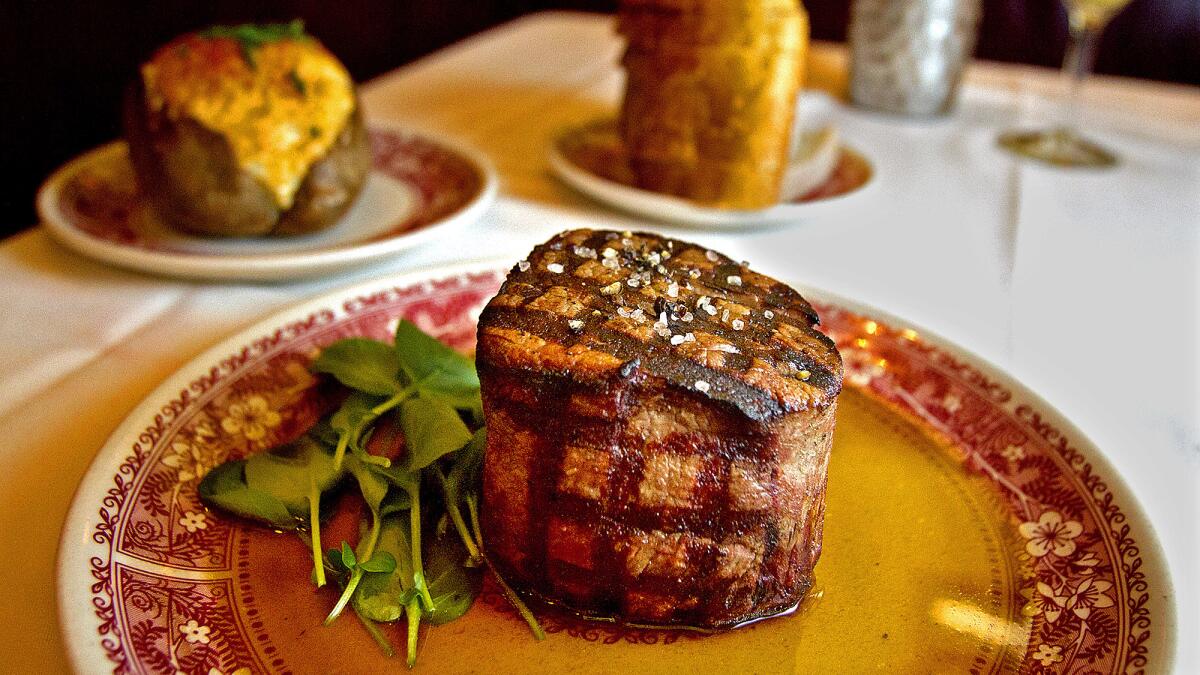
92 Musso & Frank Grill
If you are a certain kind of food guy, it is almost a sacred duty to dismiss the Musso & Frank Grill, where a large part of the menu remains largely unchanged from 1919 and where the avocado cocktail and kidneys Turbigo could not be further from the kinds of things they are serving at Red Medicine or Trois Mec. The steaks, chops and sand dabs are fine, although you'd probably do better at Mastro's or even Taylor's. Yet it is hard to imagine Hollywood without Musso's wooden booths, Manny's martinis or the chicken pot pie on Thursdays. The Welsh rarebit and shrimp Louie are unchanged from when you and your grandfather were children, and the flannel cakes are still the best consolation for late risers in town.
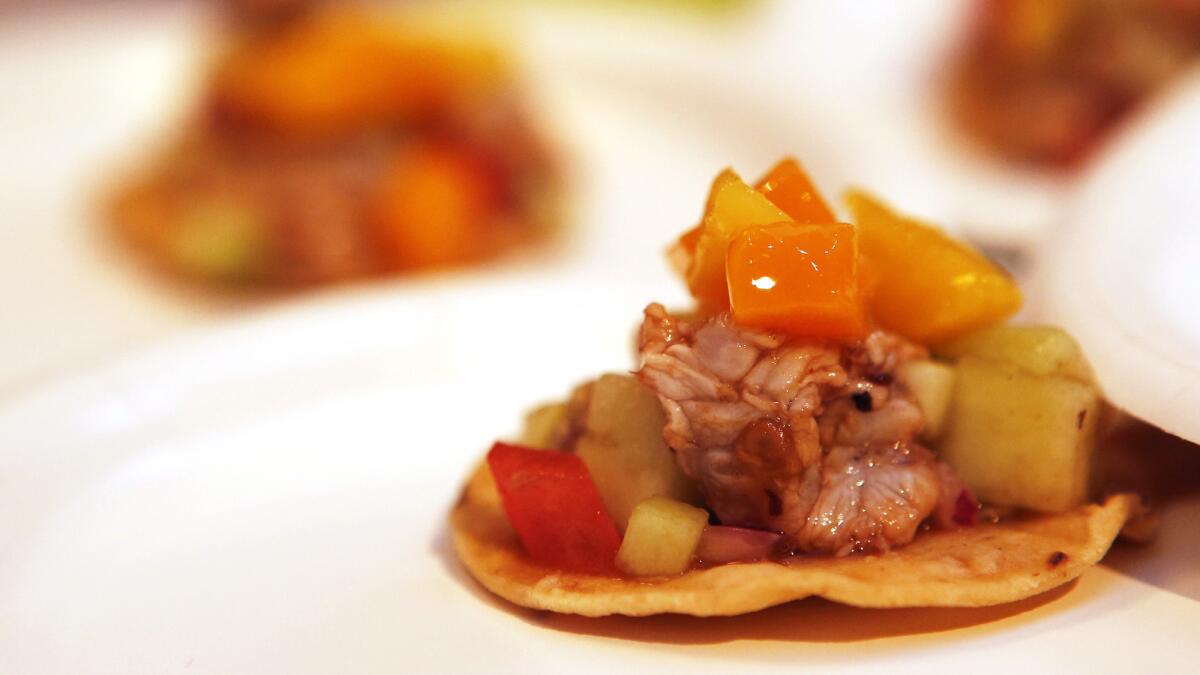
91 Coni'Seafood
There are many ways to become famous in Los Angeles, but I'm guessing Sergio Peñuelas may have been the very first chef to make his reputation as a master of snook. Pescado zarandeado is an important preparation in coastal Sinaloa, but the odd techniques involved, which include smearing whole, butterflied snook with seasoned mayonnaise and jiggling the fish over hot charcoal until the flesh caramelizes, are not quite in the traditional poissonnière's repertoire — although once you taste the snook, you may think they should be. Coni'Seafood may also have a large menu of delicious seafood cocktails and shrimp dishes, some made with seafood the restaurant brings up itself from Mazatlan, but it is not the aguachile that has inspired a generation of Angelenos to make sure Peñuelas is in the kitchen before they hop in the car. The restaurant is fairly close to LAX and the Forum.
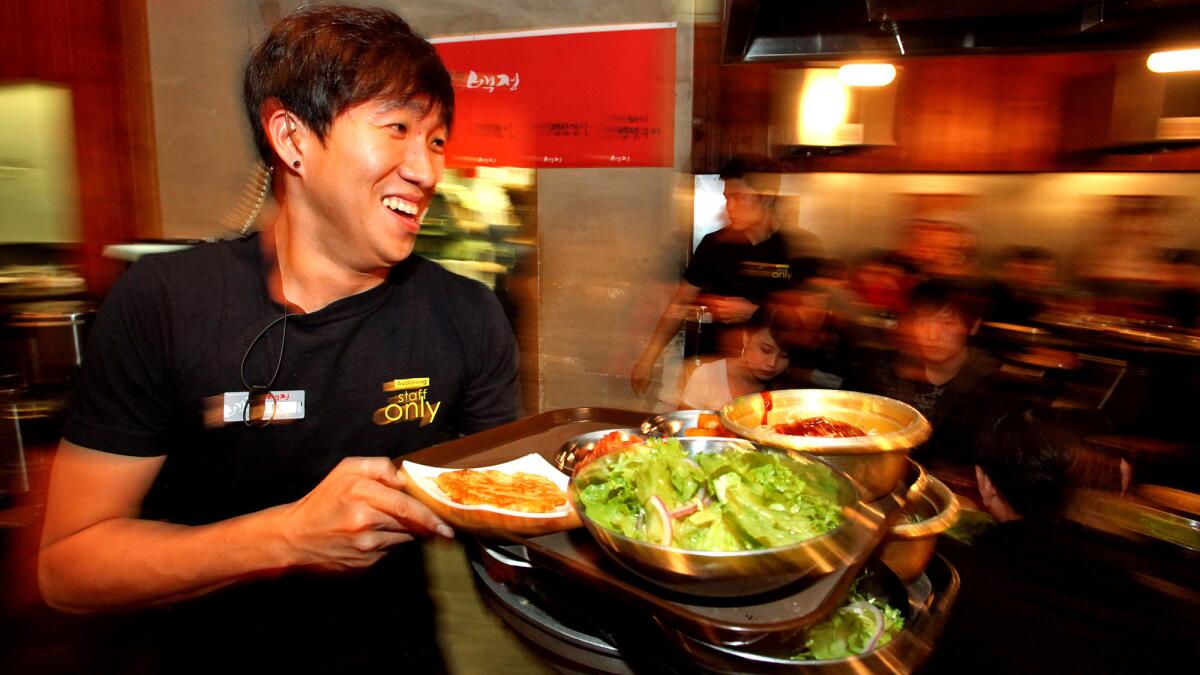
90 Kang Ho-dong Baekjeong
When you are up for Korean barbecue, you could choose the restaurant that features Piedmontese beef, the restaurant that lets you cook over coconut charcoal or one of the many, many places that specialize in all-you-can-eat volleys of charred beast. Or you could get in line and wait for a table at Kang Ho-dong Baekjeong, where you will pass between life-sized cardboard cutouts of Mr. Kang himself, sit around a tabletop grill under a wrestling poster and eat ungodly amounts of barbecued pork neck, bulgogi and pork belly, probably chosen from one of the two set dinners. Oddly, Baekjeong may be your best option, if only for the bottomless troughs of corn cheese and scrambled eggs set into the grill.
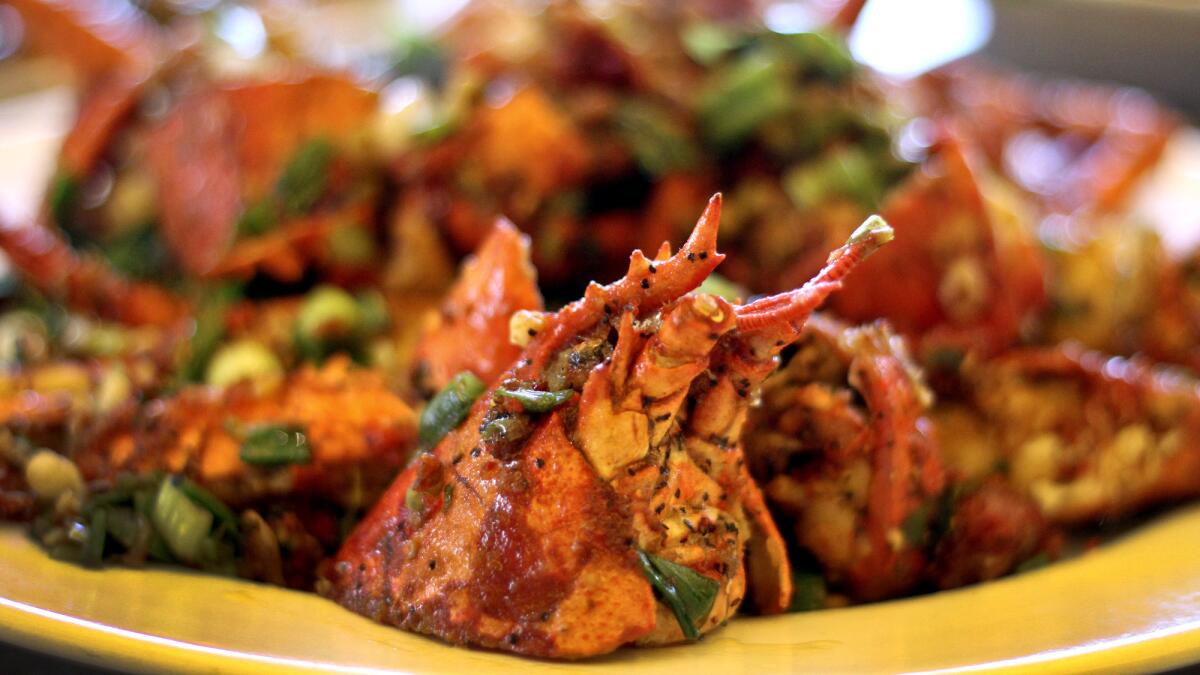
89 Newport Tan Cang Seafood
The typhoon-shelter crab at Seafood Village is good. The suckling pig at Lunasia can be splendid. But while there may be a more festive Chinese dish than the house special lobster at Newport, it is hard to think of what it might be. The fearsome beasts, 5 pounds and up, fried with fistfuls of chopped chiles, scallions and garlic, are more than a match for any tableful of ravenous, nutcracker-armed souls. You will almost certainly order the sweet-spicy Vietnamese-style "shaking beef," the pea leaves sautéed with garlic and maybe the clams with basil, but it is the lobster that will set you free.
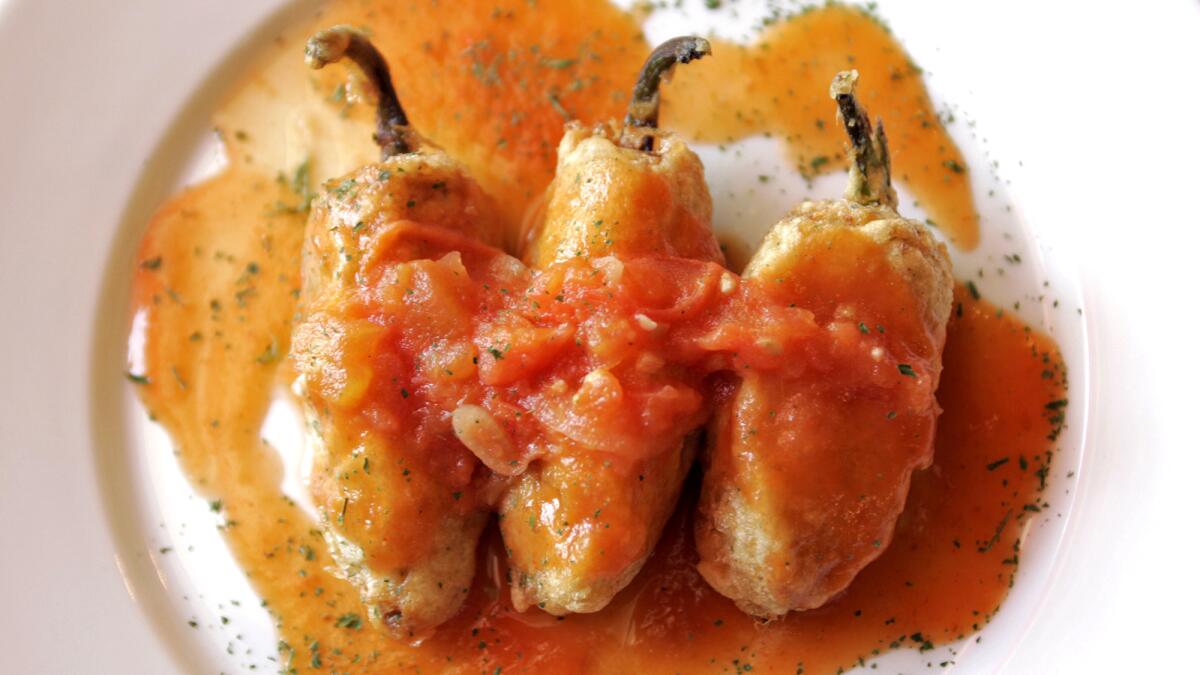
88 Chichén Itzá
Each fall, Chichén Itzá's Gilberto Cetina junior and senior make it a point to serve mucbi pollo, vast, rustic tamales made from special masa that are crunchy where you would expect them to be moist and that are at the center of the Yucatan's Day of the Dead feasts. It would be hard to imagine a preparation more typically Yucatecan, almost Maya, especially if you accompany it with a glass of agua de chaya, a sweeted drink made from an old Maya herb. And it is hard to imagine a Los Angeles restaurant more Yucatecan than Chichén Itzá, a lunch counter in the La Paloma complex named for the vast temple complex north of Cancún, whose menu is a living, habanero-intensive thesaurus of the panuchos and codzitos, sopa de lima and papadzules, banana-leaf tamales and shark casseroles that make up one of Mexico's spiciest cuisines. Chichén Itzá could pass for one of the better market restaurants in Mérida.
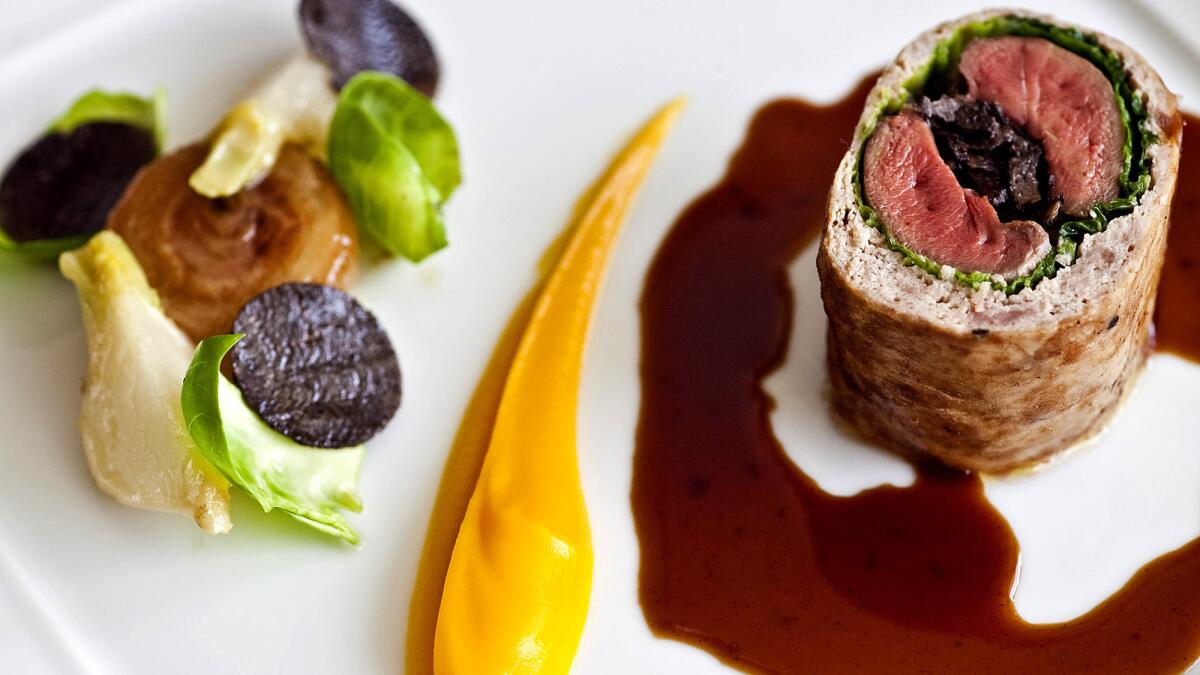
87 Patina
We have been enjoying Joachim Splichal's cooking for decades in Los Angeles, from his earliest days at the Seventh Street Bistro, through the brilliant Max au Triangle in Beverly Hills through the original Patina on Melrose, which opened 25 years ago and launched a sleek, new era of local cuisine. More great chefs may have passed through Splichal's kitchens than any other in town — and it is hard to believe that this grand, luxurious restaurant in Walt Disney Concert Hall is itself 10 years old. Has Patina settled a bit into grande dame status these days, perhaps more intent on getting its patrons out in time for the symphony than in pushing the boundaries of cuisine? I suspect even its most loyal customers might agree — except during game season, when the notion of wood pigeon and hare tends to flush gourmets from hiding.
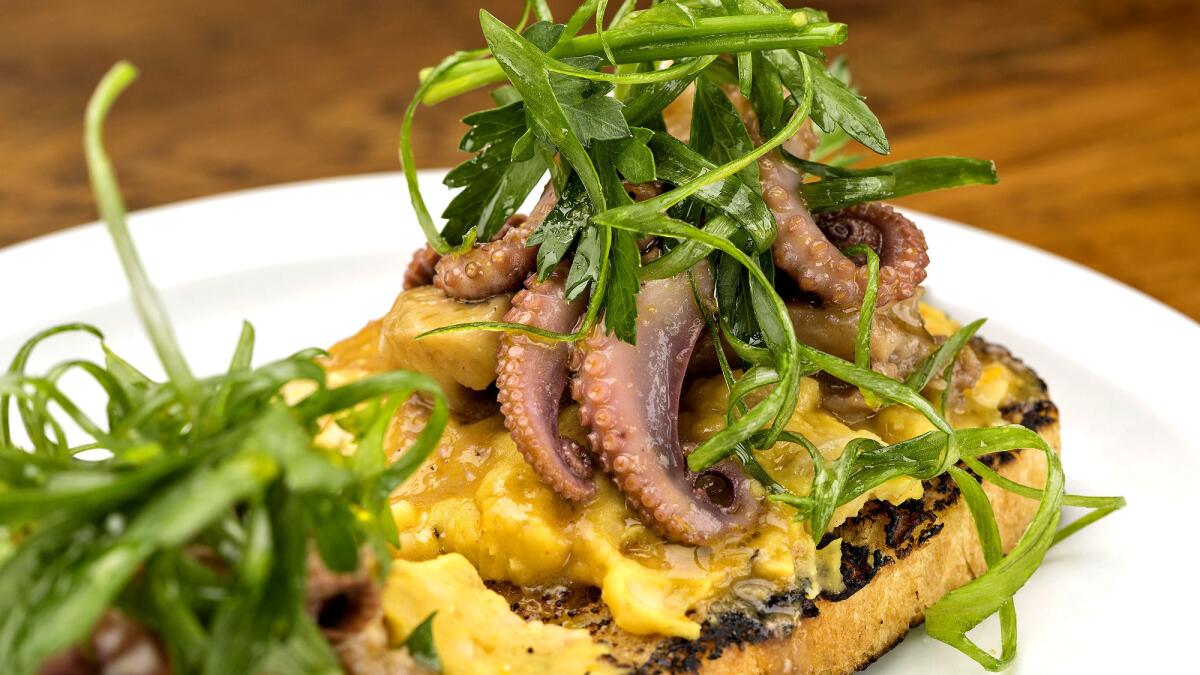
86 Picca
Nobu Matsuhisa is a Japanese chef who formed his style at sushi bars in Peru. Ricardo Zarate is a Peruvian chef who spent his formative years working at sushi bars in London. Zarate's Picca is a look at the mash-up of Peruvian flavors and Japanese techniques from the other side of the divide, where the difference between yakitori and anticuchos is a matter of semantics, where causa becomes sushi with mashed potatoes in place of rice, and where the line between ceviches and sashimi probably has more to do with the sweet potato on the side than in the quality of preparation or the fish. Peruvian izakaya is a concept whose time has come. The Julian Cox-designed Peruvian cocktails are sublime.
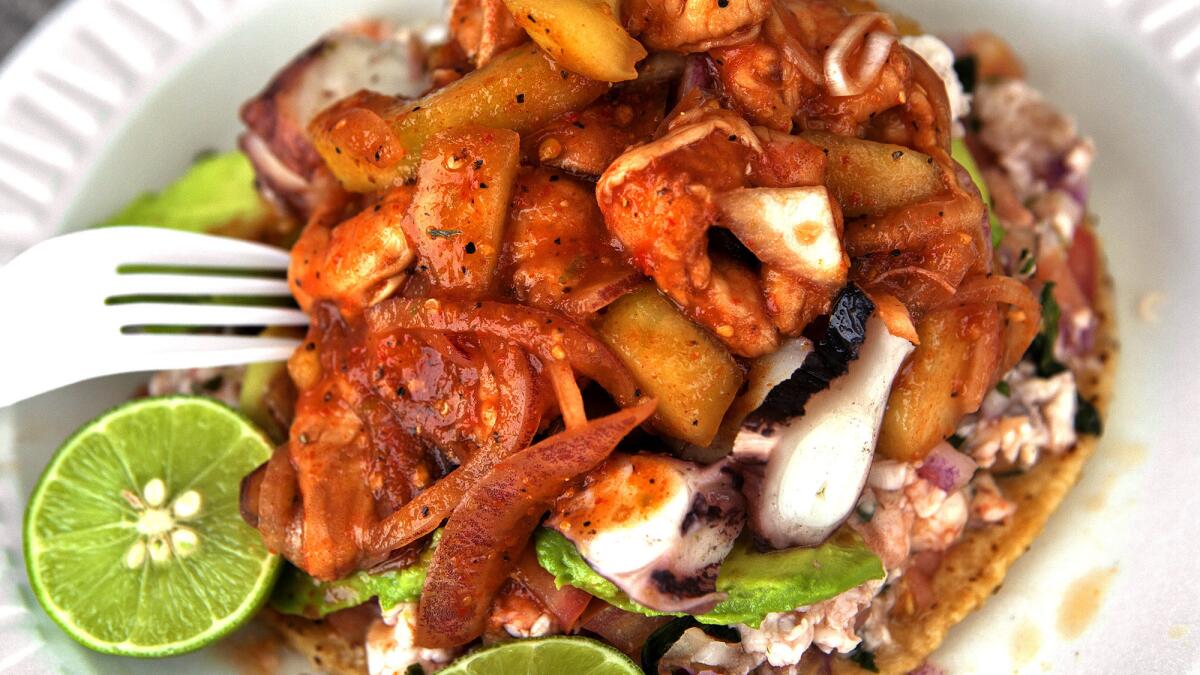
85 Mariscos Jalisco
Specializing in seafood cocktails, ceviches of fish or shrimp marinated in citrus, or aguachiles of raw seafood soaked in lime and puréed chiles, the mariscos truck is as much a part of Eastside culture as the murals, pan dulce and música norteña. Your favorite truck is as much a part of your identity as your favorite ranchera singer. But first among them is the Mariscos Jalisco truck in Boyle Heights, eternally parked in front of a former wholesaler's office, where Raul Ortega also serves his famous crunchy fried shrimp tacos in the style of San Juan de Los Lagos, his Jalisco hometown. Ortega tends to sweep the field in street-food competitions — if life were just, Ortega would be a wealthy man, and you would see his face plastered on airport concessions, glossy chain restaurants and cerveza ads.
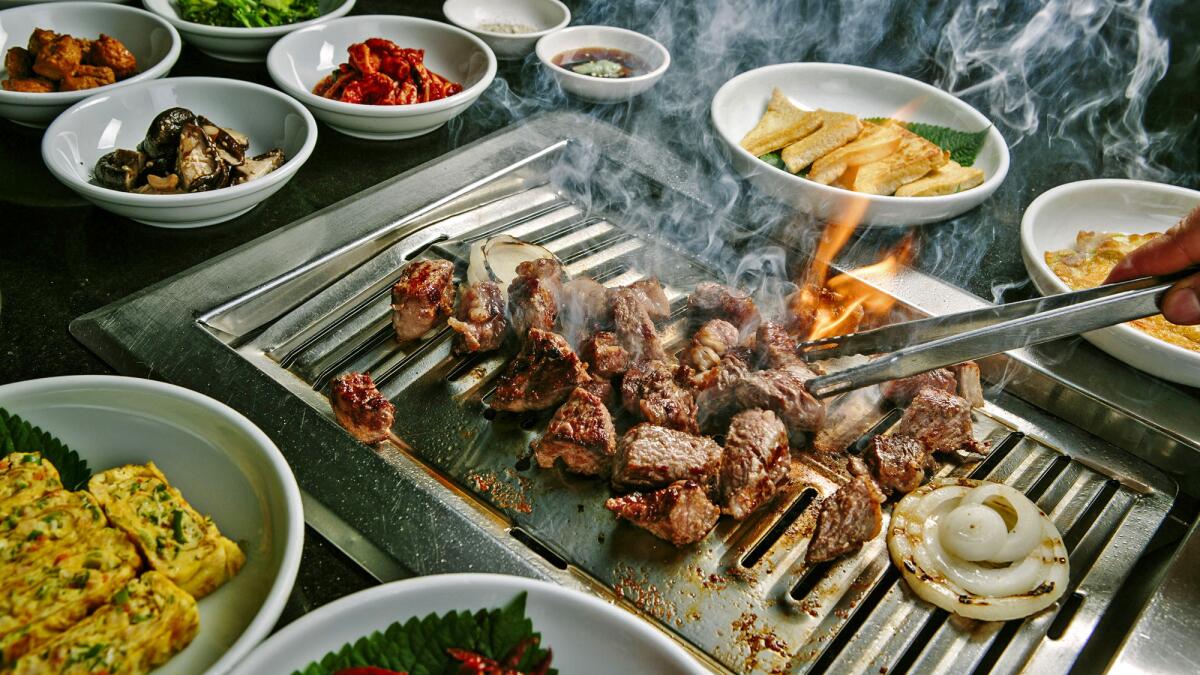
84 Park's Barbeque
You may prefer the posh of Chosun, the user-friendliness of Genwa or the funk of Soot Bull Jeep. Nobody will look down on you if you yearn for the sweet, cold noodles at the Corner Place as much as you do its unmarinated galbi or pine for the all-you-can eat mayhem at Oo Kook. But when your priorities in a Korean barbecue restaurant run more toward high-grade meat than toward a particular ambience, you are probably already a fan of Park's, where the pricey Wagyu boneless short ribs, prime rib-eye and butter-soft beef tongue are of the highest possible standard, and the stone-pot octopus and hand-chopped beef tartare with pear and sesame oil are among the very best in town. Places like Soowon and Star King are edging forward in Koreatown's world of luxury meats, but Park's still has the top end of K-Town barbecue to itself.

83 Superba Snack Bar
Do you like octopus bacon? Of course you like octopus bacon. It's chewy, crisp and smoky, made with this year's it mollusk and comes with both a bit of pine nut panna cotta and a sweet caper purée. You could put a recipe for the dish into a time capsule and, 200 years from now, it will still taste exactly like 2014, provided octopuses, capers and pine trees still flourish on the Earth. Superba, Jason Neroni's open-air restaurant in a neighborhood where the fixed-gear bicycles can outnumber cars, serves what you might call abstracted Italian, incorporating tastes and textures associated with Italian cooking into dishes that would be unrecognizable in Rome: grilled cauliflower T-bones with puréed basil, citrus and olives; "porchetta di testa" cured to resemble pastrami on rye; and cacio e pepe enhanced with miso. If the restaurant has a specialty, it is probably the pastas: handmade, slightly stiff and leaning toward excess. Bring a good book — there's going to be a wait.

82 Mantee Cafe
When people complain about the restaurants on Ventura Boulevard, Mantee is probably the kind of place they have in mind. The main dining room is as tchotchke-infested as your great-aunt's house, and the dining patio feels like somebody's backyard. The menu is almost identical to that of a dozen other Middle Eastern restaurants you've been to, and whoever runs it is overly fond of the Gipsy Kings. Yet a single bite of the suave, garlicky hummus, flaky cheese borek or the impossibly thick drained yogurt called labneh is enough to let you know you are at a different kind of Lebanese-Armenian restaurant here, one related to one of the better-known Armenian restaurants in Beirut. The kebab in sour cherry sauce, the purslane-intensive toasted-pita salad fattoush and the namesake dish, a platter of tiny beef dumplings sizzling in a bath of garlicky yogurt, are like nothing else in Los Angeles.

81 Meals by Genet
Ethiopian food should by all rights be the most exotic of world cuisines, governed by an elaborate schedule of feasting and fasting, scented with fiery aromatics that rarely make it out of the area and based on a floppy, sour flatbread that looks, as Calvin Trillin once wrote, as if it has a hundred industrial uses, not including being used as food. The gift of Genet Agonafer is that she is able to weave Ethiopian flavors into something as familiar as Sunday dinner at your grandmother's house, at least if your grandmother was in the habit of simmering the chicken for her doro wot with cloves and bishop's weed for the better part of three days, arranging vegetarian stews around a platter with an artist's aplomb or mincing raw beef for the spiced tartare kitfo with the careful abandon that a Thai master shows his larb. Looked at in isolation, Agonafer's cooking may be as wild as that of her funkier Little Ethiopia neighbors, but the final impression is of a genteel, old-fashioned bistro.

80 Sapp Coffee Shop
Sapp passed its first couple of decades as Thai Town's quiet underachiever, a drowsy lunchroom where you found yourself because the glamorous restaurants in the neighborhood never opened before dark. Then everybody realized that Sapp's fragrant roast duck noodles, jade noodles with Chinese barbecue and grilled sausage with peanuts were what they wanted all along: Thai food cooked for people who ate Thai food every day. The gray-looking nam sod, a ground-pork salad spiked with slithery bits of pig's ear and a generous shot of lime, is the sort of thing you find yourself craving the moment you step onto an outbound plane. And in a part of town devoted to boat noodle soup, the funky, spicy amalgamation of beef broth, ground blood and offal, Sapp's version is the one you want to be facing down after a night of excess.
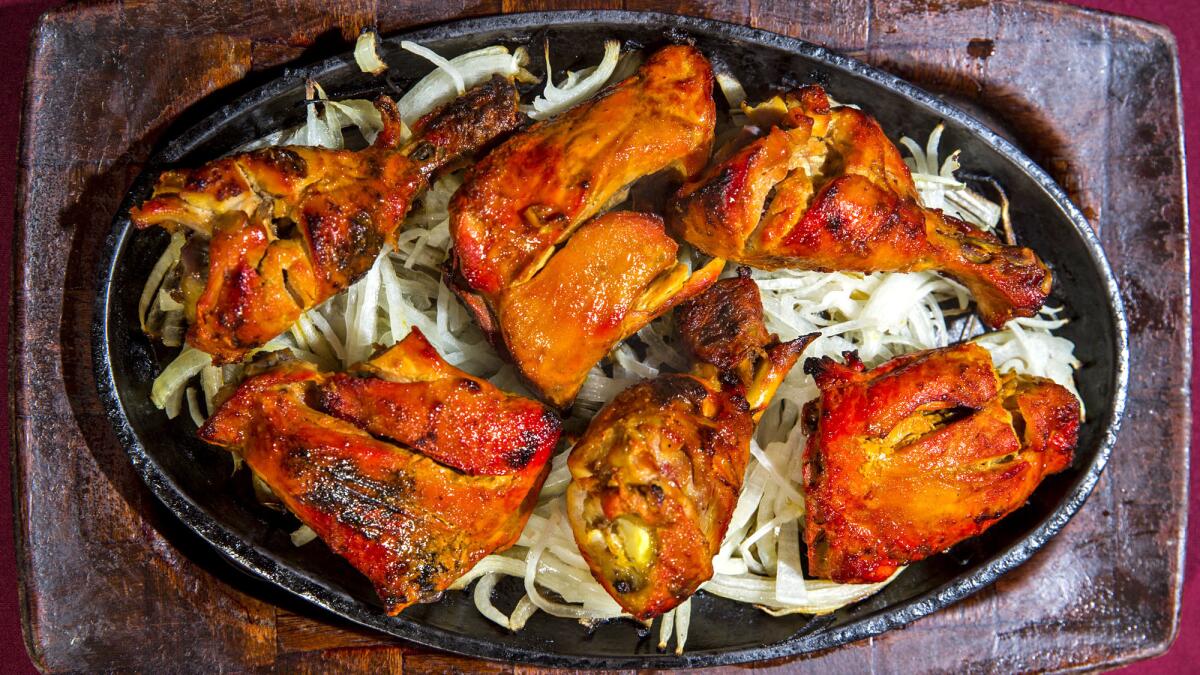
79 Mayura
You've probably heard that the place to go for Indian food is the Little India neighborhood in Artesia, and this isn't wrong. You can find a lot of pleasure at the better regional restaurants on Pioneer Boulevard, including Jay Bharat, Rajdhani, Woodlands and Mumbai Ki Galliyon Si. But Mayura, just a block from the studios in Culver City, is the only place in the Los Angeles area to specialize in the complex cooking of Kerala, a largely vegetarian region on India's south coast, and if you are adventurous enough to try the buttery cashew rice called ven pongal instead of biryani, fermented-rice appam instead of roti, and the coconut-zapped avial instead of almost anything, you will be deliriously happy here. The dosas are pretty great too. Mayura has a separate kitchen preparing halal meat dishes in the north Indian mode, so if you're craving tandoori chicken or Pakistani-style nehari, you'll be fine.
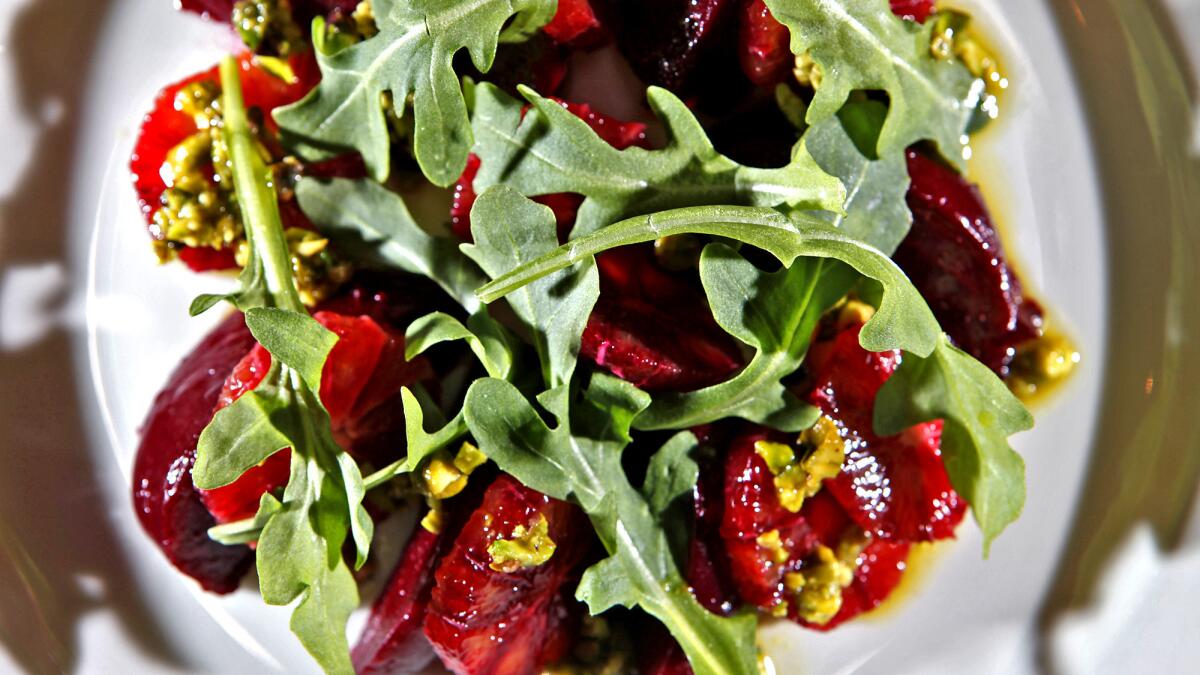
78 Cooks County
Fried Chicken Monday — sure, there's Fried Chicken Monday. More than one person we know likes to arrange her week around Daniel Mattern's crackly pan-fried chicken and a cut of Roxana Jullapat's ice cream pie. But if you are the kind of person who stops by a farmers market twice a week, seeks out grass-fed lamb and daydreams about selling jars of lemon curd on Etsy, the food at Cooks County is going to seem pretty familiar. Mattern's cooking incorporates not just the seasons but also the microseasons of Southern California produce so that you can probably set your watch by the moment wild nettles join the green garlic with the lamb. It's not a particular dish you fall in love with here, it's the sensibility — and maybe the grilled seafood soup, the asparagus fries and Jullapat's homey fruit desserts.
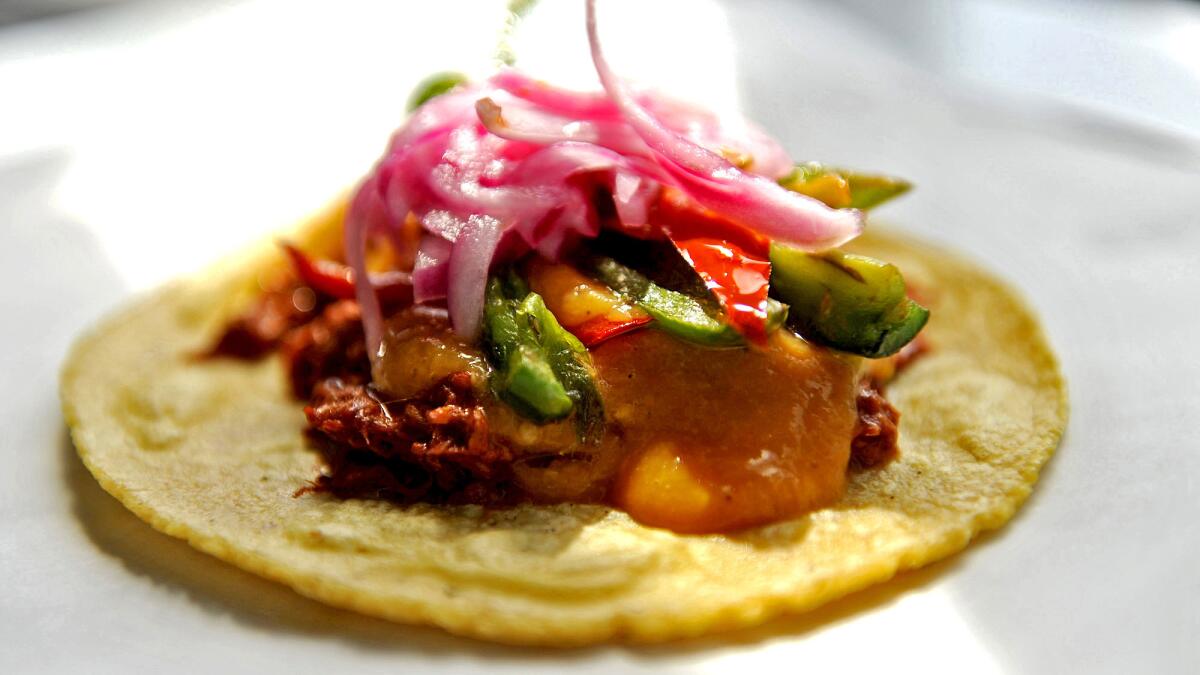
77 Guisados
If you were going to design the perfect taquería, it might look a lot like Armando De La Torre's original Guisados in Boyle Heights. The tortillas are made from fresh nixtamal ground several times an hour at the tortillería next door, and the fillings tend to be long-simmered stews. Vegetarians are as happy with the stewed calabacita as carnivores are with the cochinito pibil. And fire eaters take pleasure in the chiles toreados, made from peppers De La Torre grows in his backyard. I once heard a rumor that I was in the habit of eating three chiles torreados tacos in a sitting, which I believe to be a physical impossibility. But if you should ever be tempted to give it a try, you can take comfort in knowing that the White Memorial emergency room is just down the street.
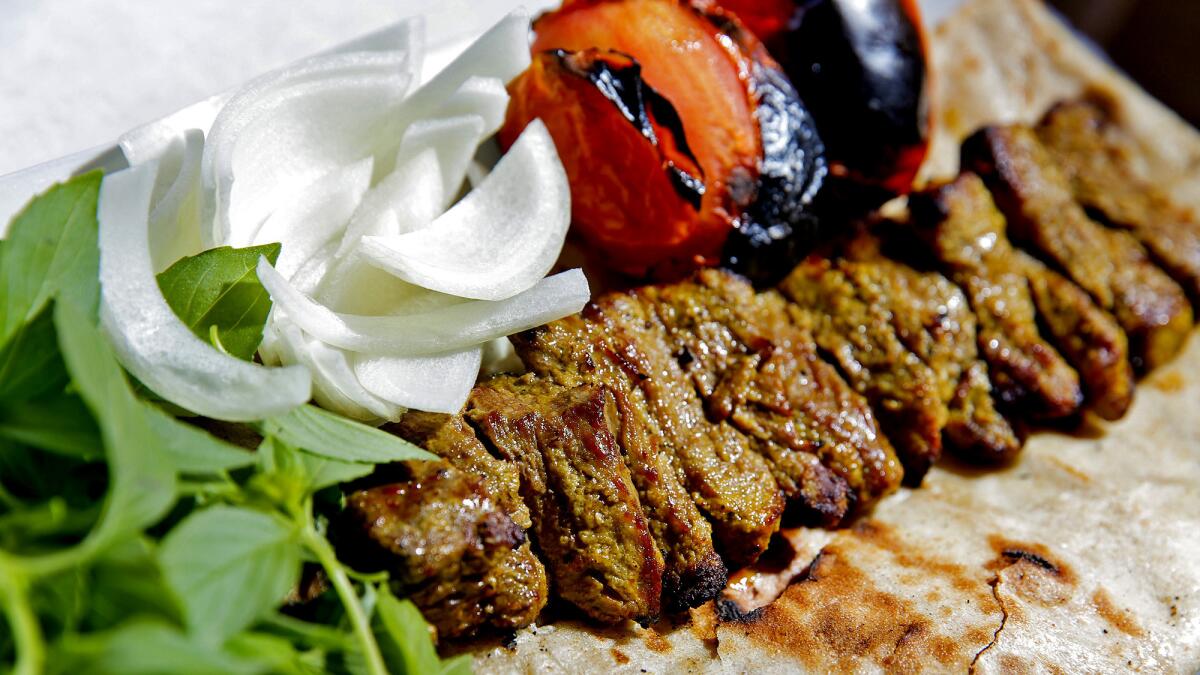
76 Attari Sandwich Shop
The Westside Tehrangeles neighborhood is thick with Iranian restaurants of every description, many of them plush dining rooms with long menus of kebabs, thick stews and tanor bread made to order. You'd probably choose Flame or Javan for a feast of fesenjan or grilled lamb. But Attari is a slice of Tehran high society transplanted onto a leafy Westwood patio, exquisitely tailored expats sipping tea and eating the thick Iranian soup called osh or crisp French bread sandwiches stuffed with slices of kuku, a bright-green frittata that is at least half fresh herbs by weight. On Fridays, the mandatory order is abgoosht, a complex, delicious stew of lamb and chickpeas mashed into a thick, homogeneous paste with the texture of refried beans, alongside a bowl of its expressed essence served as soup. The full-service Attari Grill, with an extensive Persian menu, is next door, but things always seem happier at the original sandwich shop.

75 Ración
When you wander into Ración after a movie in Old Town Pasadena, you may be expecting the basic tapas you find everywhere in Los Angeles. Instead, there are crisp, gooey chicken croquettes, grilled leeks with smoked olive oil, lamb meatballs, duck sausage-stuffed squid and pintxos (bruschetta, more or less) of crab salad accented with anchovy, squid griddled with lemon and onions, or sliced tongue with pickled scallions. Loretta Peng and chef Teresa Montano are serving their version of Basque-style tapas, the stuff of San Sebastian's back alleys, inspired by rather than exactly duplicating Basque flavors. Montano's cooking is becoming more assured by the month. The wine list includes not one but three Txakolinas, as well as Basque ciders and the hard-to-find Rueda from Belondrade y Lurton, which is among the most delicious of all Spanish whites.
READ MORE:
1-25
26-50
51-75